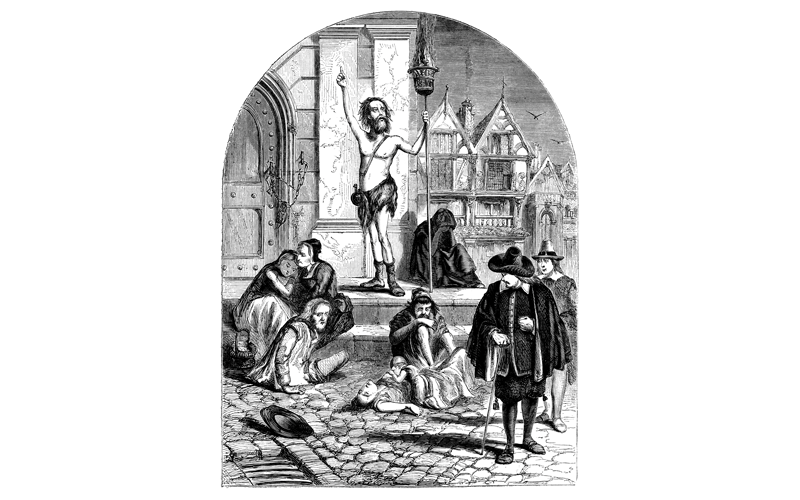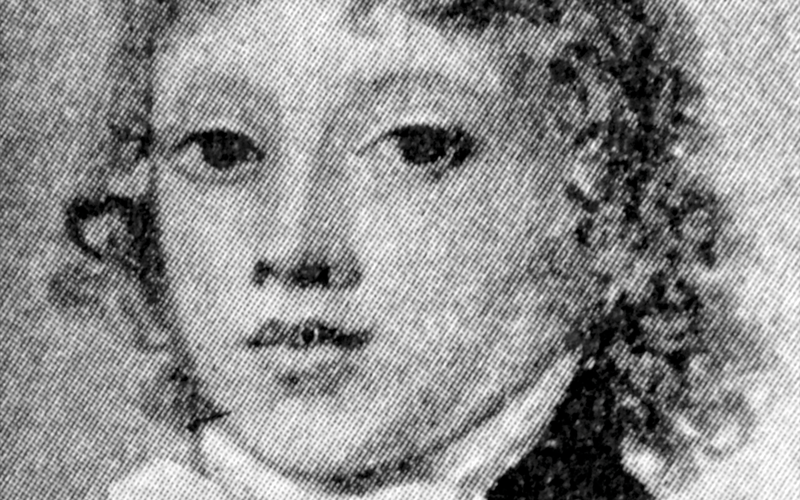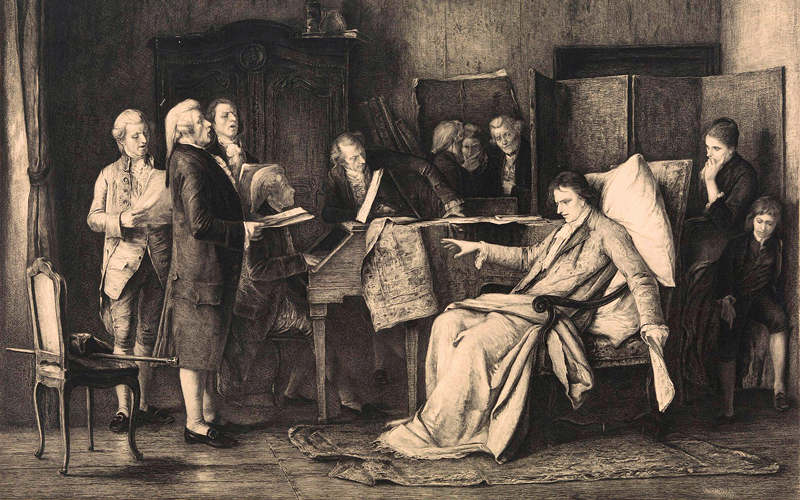Stephen Mortlock looks at health and wealth through the ages, from peasant diets in the 15th century to rockstar plane crashes and political assassinations.

Early physicians came to associate some diseases with poverty and the lower classes – certainly medieval towns were far from clean. Standing water, animal dung, privy contents, the unburied dead and rubbish could be found in the streets, while animals and fish were slaughtered there. Geese and pigs roamed freely. Dogs and cats scavenged in the streets and even ate the bodies cut from the gallows. Thus, physicians believed many common ailments were caused by environmental conditions, such as crowded cities, an imbalanced diet and the dreaded “miasmas”. The common scourges, such as tuberculosis (TB) and plague, spread rapidly, but the wealthy elite would often escape disease epidemics by retreating to their country estates. If they did become sick, they could often afford to treat themselves with special diets, imported wines, costly medicines, and visits to hot springs or baths, which were thought to have healing powers.
Two types of illness

The Lylye of Medicynes is a significant 15th century Middle English translation of a Latin medical text, the Lilium Medicinae, written in the early 14th century by Bernard de Gordon (1270–1330), a highly respected medical doctor and lecturer in the medical school of Montpellier. It is interesting that although different treatments are not provided for every illness, those in which differences are noted are often summarised into two categories: chronic conditions, and diseases associated with poverty. It is not surprising that differences in treatment are mentioned for chronic conditions, such as epilepsy and leprosy, where the ability to afford long-term treatment becomes problematic for a low-income person. Furthermore, these chronic conditions were considered next to impossible to cure and difficult to treat, except with a diverse plan of remedies and ingredients. A rich person was provided with a range of options and expensive medications. For instance, in the case of leprosy (or various skin conditions with the characteristics of leprosy), a rich person was offered electuaries (a medicinal substance mixed with honey or another sweet substance) made with pearls (diamarciaton) or ambergris (diambre), while a poor person received electuaries made with rosemary (dianthos) or aloes (dianisum). The valuable ambergris was again recommended for a rich person suffering from stomach pain/vomiting, while a poor person was limited to standard, readily available ingredients, such as mint. Coughing and lice were conditions associated with poverty. In the case of coughing, the Lylye states: “Poor men are much afflicted with this condition.” The suggested cure for coughing in a poor person is breath control exercises, such as: “let him hold his breath often as much as it is possible” or “blow the fire often.” These treatments, although affordable, were perhaps not that effective.
Infectious diseases may have been more common among the poor, but they could still torment the wealthy. Some problems, such as infant death, cut across class lines. A quarter of all babies, whether born into wealth or poverty, died before their second birthdays. In the case of the early modern English aristocracy, birth and child mortality rates were high, largely driven by the longstanding tradition of using wet nurses and other servants to care for children. Doblhammer and Oeppen (2003) found that there was a trade-off between fertility and longevity, which not only shortened the life expectancy of offspring but may have decreased the lifespans of wealthy women, and it was not uncommon among ultra-wealthy women of the 16th to 18th centuries to have as many as 20 pregnancies through their childbearing years, which mirrored the trend among the aristocracy of the medieval period. Other scholars have linked longer birth intervals and lower child mortality among the common classes of prior to 1750 to higher prevalence of maternal breastfeeding.
Diet and health

In the mid-1500s, the Italian scientist Girolamo Fracastoro (1478–1553) wrote about a disease he called lenticular fever that tended to attack "those who are rather delicate and less robust." This ailment, Fracastoro noted, had less effect on the hearty peasant classes “because they exert themselves strenuously [vigorously] and their diet is more frugal [thrifty].” Certainly, before the Black Death, wealthy individuals in England consumed higher-quality breads made from fine wheat flour, while the poor were generally limited to lower quality, coarser breads. For individuals of all status levels, however, grains provided the largest component of the diet and were consumed as bread, ale, and pottage (a soup or stew of vegetables and grain with meat, when available). Following the Black Death there was an increase in the amount of meat and fish in the diet across the population, although higher-status individuals consumed a greater amount and variety of both. Fruits, vegetables, and dairy products were consumed by all classes, but wealthy individuals ate more imported luxury foods, such as dried fruits, spices, wine, and cane sugar. And because of this archaeological records show the wealthy had more cavities than the poor. Although dental problems affected everyone, the heavy grain diet of the poor reduced plaque, but wore down teeth more quickly.
Upper-class diseases
Physicians believed that the upper classes were particularly subject to certain illnesses. Many members of Italy’s powerful Medici family, for example, struggled with TB, while King Henry VIII suffered from painful and ugly sores on his legs that refused to heal. In England during 1485–1551 there were several epidemics of a disease often called “sweating sickness” characterised by sudden headaches, myalgia, fever, profuse sweating, and dyspnoea. In this instance it was not the young or old who became stricken, but the middle-aged, professionally active, especially wealthy, upper-class males and today it is still a historical and epidemiological mystery. The only disease that bears any resemblance to the English sweating sickness is the Picardy sweat, also known as miliary fever. It is believed that in 1791 the composer Wolfgang Amadeus Mozart died of “hitziges Frieselfieber” (or “severe miliary fever”). Despite there being many candidates for the condition they were all eventually dismissed until only a hantavirus infection remained a possibility, but even now there is no definitive explanation.
Changing attitudes

It is easy to understand how illness posed a great threat to rural and urban day labourers. Sickness, like any other disaster, could plunge a family into deeper poverty. Hospitals and traditional charities rarely helped families with this challenge. As a result, the gap between rich and poor grew wider during the late Renaissance. But attitudes toward poverty and the poor in Europe started to change throughout the centuries. The Medieval Church taught that on Judgement Day people would be judged based on the deeds done for the needy and weak. Acts of mercy, such as feeding the hungry, housing a stranger, and relieving the poor were expected from believers. Many works of art, fiction, and moral-didactic texts were composed to induce people to help those in need. In 1587, Nicholas Attfield, a yeoman farmer of Bagshot, left 20 shillings (approximately £175 today) in his will for the poor and needy folks of the village. Possibly with a view to securing good favour with the church.
Disease amongst the glitterati
Writers, philosophers, and artists were often considered superior minds among the general population, with their creative, bohemian (and often promiscuous) lifestyles. But although social diseases ignored geographical, racial, or social barriers and affected many great personalities, when you were in the public eye, any indiscretion could have severe consequences. Beau Brummel (1778–1840), a Regency socialite, caught the attention of the Prince Regent (the future King George IV) and became a favourite at court. Brummel was a doyen of fashion with large elaborately knotted cravats, silk shirts and his boots were supposedly washed in champagne. Unfortunately, an ill-timed remark to the Prince caused him to fall out of favour and he died penniless with his mind and body broken by syphilis. The Italian adventurer, gambler and author Giacomo Casanova (1725–1798) was famous for his techniques of seduction; however, most of his sexual partners were probably prostitutes, and this may be the reason why he had gonorrhoea four times, chancroid five times, syphilis, and genital herpes. Gérard de Lairesse (1641–1711), the Dutch painter and art theorist, had a portrait completed by Rembrandt (1606–1669) that clearly shows the saddle nose and facial disfigurements caused by syphilis. Eliza Rosanna Gilbert, Countess of Landsfeld (1821–1861), better known by the stage name Lola Montez, was an Irish dancer and actress who became famous as a Spanish dancer, courtesan, and mistress of King Ludwig I of Bavaria. When she died in 1861 she was showing the effects of tertiary syphilis, and her body was beginning to waste away. It is believed that Lola was the inspiration behind the character of Irene Adler, in the Sherlock Holmes story ‘A Scandal in Bohemia.’ The 19th century French author Henri René Albert Guy de Maupassant (1850–1893) was a master of the short story, as well as a representative of the naturalist school, depicting human lives, destinies and social forces in disillusioned and often pessimistic terms. In 1892, he tried to commit suicide by cutting his own throat; not surprisingly his family committed him to a private asylum in Paris, where he died from syphilis the following year.

Even the philosophers, supposedly insensitive to women’s charms, have suffered from syphilis. The most famous of them were Friedrich Nietzsche (1844–1900) and Arthur Schopenhauer (1788–1860), while the monarchy was not spared the ravages of this implacable disease. Ivan the Terrible, or more correctly Tsar Ivan IV Vasilievici, (1530–1584) was renowned for his brutal behaviour; some authors now believe that tertiary syphilis could have been the reason behind his complex personality. He was described as intelligent and devout, but also prone to paranoia, rage, and episodic outbreaks of mental instability that worsened with age. King Henry III and Charles V of France, Henry VIII and George IV of England, Paul I of Russia and Maximilian I of the Holy Roman Empire all suffered from this terrible disease. Al Capone (1899–947), the famous gangster, died of complications aggravated by neurosyphilis, despite being one of the first American patients to receive penicillin. It is believed he acquired the disease when he was working as a bouncer at a brothel.
The artist’s disease
Worsening social conditions following the industrial revolution, such as overcrowding, poverty and malnutrition, allowed TB, although a disease of antiquity, to decimate the working classes. Dormandy (1999) remarked that “the disease picked out and killed a few Princes and it carried off more than one bejewelled, tender-hearted courtesan: but it slaughtered the poor by the million.” But it also became known as the “artist’s disease”, being linked with the creativity and bohemian lifestyle of artists being romanticised in society by poets like Keats, Edgar Allan Poe, Emily Brontë, and Shelley (all of whom died from TB). Thomas Wolfe, regarded as one of the greatest novelists of the 20th century, died in 1938 at the age of 37 of TB of the brain. Other personalities afflicted include Vivien Leigh, Erwin Schrödinger, F. Scott Fitzgerald and Tom Fogerty, the guitarist in the popular rock band Creedence Clearwater Revival.

The first influenza epidemic may have occurred around 6000 BC in China and possible descriptions of influenza exist in Greek writings from the 5th century BC. Following the 1918 Spanish flu pandemic everyone became acutely aware of the devastating consequences and many notable people have died throughout the years – Isaac D’Israeli (1766–1848), scholar, man of letters and the father of British Prime Minister Benjamin Disraeli, the philosopher Bertrand Russell (1872–1970), the actor Trevor Howard (1913–1988) and Phoebe Hearst (1842–1919), the American philanthropist, feminist and suffragist. And it would be remiss not to mention Captain Leone Sextus Denys Oswolf Fraudatifilius Tollemache-Tollemache de Orellana Plantagenet Tollemache-Tollemache (1884–1917) a British Army officer who died during the First World War of influenza and with reputedly the longest ever surname.

Death through affluence
Then there are the hazards of extreme affluence, such as being thrown off a polo pony, flipping your racing yacht, or succumbing to altitude sickness on a vanity expedition to the Himalayas, but if you survive month-to-month for money, you will probably not die from some expensive boating accident or flying your own plane. Travel by private plane and chartered helicopter is, not surprisingly, much riskier than flying commercial, claiming in recent years figures in entertainment, politics, and business including the country singer
John Denver (1943–1997), guitarist Randy Rhoads (1956–1982) and the band members of Lynyrd Skynyrd (1977). The flying accident that killed golfer Payne Stewart (1957–1999) and four others in 1999 was particularly grisly. Their Learjet depressurised at altitude and after the occupants suffocated and froze, the plane coasted another 1500 miles on autopilot before crashing into a field. This expensive pastime also caused the death of John F. Kennedy Jr, his wife Carolyn, and her sister Lauren when their single-engine plane plunged into waters off Martha’s Vineyard. The Kennedy family, however, might be considered in a risk category all their own given the family history of driving off bridges (Teddy), smashing into trees while playing football on skis (Michael), death by drugs (David, and Christina Onassis), plane crashes (Joseph Jr, Kathleen, Alexander Onassis, and, very nearly, Teddy), and assassination (JFK and RFK). These are terrible fates, but ones that members of the struggling middle class do not have to worry much about.

And having a fan club can be seriously hazardous – John Lennon was shot and killed by a fan and stalker, while the singer Selena Quintanilla-Pérez (1971–1995) was shot by the president of her own fan club and Princess Diana died in Paris following a car crash while attempting to avoid the paparazzi. In 2001, nine members of the Nepalese royal family were killed in the Narayanhiti Palace in Kathmandu, Nepal and the person responsible was the heir to the throne, Prince Dipendra. He killed his family and then turned the gun on himself which has led to controversies and conspiracy theories surrounding the event.
Medical conditions
There are some people whose names have become synonymous with unusual medical conditions. In 1927 a 27-year-old woman living in London believed she was being harassed by two theatre actors and also thought that her family, friends, and strangers were all one tormentor in disguise. The French psychiatrists Corbin and Fail diagnosed her condition and called it Fregoli syndrome after a famous Italian performer, Leopoldo Fregoli (1867–1936), who was known for his remarkable ability to impersonate almost any character in a short amount of time. He was known as the “man of a thousand faces” and left audiences dumbstruck as he switched between impersonations (costumes and all) in seconds.
There have been many stories about Münchhausen syndrome, named after the 18th century German nobleman (Hieronymus Carl Friedrich von Münchhausen), and his often exaggerated, extraordinary tales about his adventures as a soldier, hunter, and sportsman. But in 1951, British endocrinologist and haematologist Richard Asher coined the term “Münchhausen syndrome” for the mental disorder in which a person exaggerates or creates symptoms of illness because of an intense need for attention, often fabricating medical histories, self-harming to prevent the healing process, and tampering with medical instruments to skew results.
Amyotrophic lateral sclerosis (ALS) disease is a progressive degeneration of motor cells in the brain and spinal cord.

As a result, muscles begin to waste away. The disease, however, does not impair a person’s intellectual reasoning, vision, hearing, or sense of taste, smell, and touch. In North America this is often referred to as Lou Gehrig’s disease after the major league baseball player who batted for the New York Yankees from 1923 to 1939. In 1938 it became clear that something was wrong when his batting statistics fell for the first time since 1925 and he grew weak and sluggish. Originally diagnosed for a gall-bladder problem, it was later found to be the rare form of the degenerative disease ALS. Gehrig played his last game on 29 April 1939. He died 2 years later at age 37.
“One of the inherent privileges of the wealthy was the ability to protect themselves from health threats”
Conclusions
Kunitz and Engerman (1992) argued that although wealth may always have conferred health advantages, these advantages did not necessarily translate into a survival advantage before the 19th century. According to them this was because before the 19th century mortality patterns were strongly affected by diseases that were relatively insensitive to nutritional status. Only once the most lethal diseases, such as plague and smallpox, were controlled could the protective effects of good nutritional status against milder diseases, such as pneumonia, TB, and diarrhoeal diseases, become evident. Throughout history one of the inherent privileges of the wealthy was the ability to protect themselves from many of the threats to health, including poor indoor air quality, overcrowding and poor sanitation, psychosocial stress, malnutrition, violent crime, occupational hazards and the ability to relocate during periods of epidemic disease. Unfortunately, this did not always happen and the wealthy and the creative elite also succumbed to prevalent diseases of the time, whether unintentionally or through lifestyle choices, and their indiscretions were often on show to society. The infamous Cesare Borgia (1475–1507), considered to be the most handsome man of his day, is believed to have suffered from syphilis and he wore a velvet mask to cover up the disfigurement on his face. The paparazzi of the time must have wondered what was happening when they saw Cesare in the street, and how they would report the news for the next edition of the “gazzettieri”.

Oscar Wilde (1854–1900) famously said: “There is only one thing in life worse than being talked about, and that is not being talked about.” So, for some people, dying an interesting death might be classed as a fitting epitaph.
Dr Stephen Mortlock is still semi-retired and working as a bank Biomedical scientist at Frimley Park Hospital in the microbiology department.
References
Bendix J. Diseases of the rich and famous. Med Econ. 2010 Mar 5;87(5):22, 27-8, 31. PMID: 20377074.
Tampa M, Sarbu I, Matei C, Benea V, Georgescu SR. Brief history of syphilis. J Med Life. 2014 Mar 15;7(1):4-10. Epub 2014 Mar 25. PMID: 24653750; PMCID: PMC3956094.
Lathan SR. Thomas Wolfe: Chapel Hill days and death from tuberculosis. Proc (Bayl Univ Med Cent). 2012 Oct;25(4):334-7. doi: 10.1080/08998280.2012.11928869. PMID: 23077380; PMCID: PMC3448571.
Barr J, Schalick WO 3rd, Shortell CK. Surgeons in the time of plague: Guy de Chauliac in fourteenth-century France. J Vasc Surg Cases Innov Tech. 2020 Dec;6(4):657-658. doi: 10.1016/j.jvscit.2020.07.006. Epub 2020 Jul 27. PMID: 32838095; PMCID: PMC7384400.
Hunter PR. The English sweating sickness, with particular reference to the 1551 outbreak in Chester. Rev Infect Dis. 1991 Mar-Apr;13(2):303-6. doi: 10.1093/clinids/13.2.303. PMID: 2041963.
Heyman P, Simons L, Cochez C. Were the English sweating sickness and the Picardy sweat caused by hantaviruses? Viruses. 2014 Jan 7;6(1):151-71. doi: 10.3390/v6010151. PMID: 24402305; PMCID: PMC3917436.
Rodin A.E. A historical survey of disease concepts. Can. Med. J. 1962;87:124–128.
Mercer A. Protection against severe infectious disease in the past. Pathog Glob Health. 2021 May;115(3):151-167
Thwaites G, Taviner M, Gant V. The English sweating sickness, 1485 to 1551. N Engl J Med. 1997 Feb 20;336(8):580-2.
Bridson E. The English 'sweate' (Sudor Anglicus) and Hantavirus pulmonary syndrome. Br J Biomed Sci. 2001;58(1):1-6
Webb FC. The Sweating Sickness in England. Sanit Rev J Public Health. 1857 Jul;3(10):105-124. PMID: 30378983; PMCID: PMC5981503.
Singh AR, Singh SA. Diseases of poverty and lifestyle, well-being and human development. Mens Sana Monogr. 2008 Jan;6(1):187-225
Fatović-Ferenčić S, Dürrigl MA. Poverty: Between Common Conscience and Public Health. Croat Med J. 2007 Oct;48(5):585–94.
Leggett S & lambert T. ‘Food & Power in Early medieval England: A lack of (Isotopic) Enrichment’ Anglo-Saxon England (2020), 49: 155-196.
Weisberg J. ‘Deathstyles of the Rich and Famous: - The upper class has its problems, too.’ SLATE (2006). June.
Mojtabai R. Fregoli syndrome. Aust N Z J Psychiatry. 1994 Sep;28(3):458-62. doi: 10.3109/00048679409075874. PMID: 7893241.
Abeln B, Love R. An Overview of Munchausen Syndrome and Munchausen Syndrome by Proxy. Nurs Clin North Am. 2018 Sep;53(3):375-384.
Folks DG. Munchausen's syndrome and other factitious disorders. Neurol Clin. 1995 May;13(2):267-81. PMID: 7643825.
McKane JP, Anderson J. Munchausen's syndrome: rule breakers and risk takers. Br J Hosp Med. 1997 Aug 20-Sep 2;58(4):150-3. PMID: 9373404.
Fred HL. Lou Gehrig and Ed Todd: Greatness Interrupted. Tex Heart Inst J. 2017 Dec 19;44(6):383-384. doi: 10.14503/THIJ-17-6540. PMID: 29276435; PMCID: PMC5737147
Hühne-Osterloh G, Grupe G. Causes of infant mortality in the Middle Ages revealed by chemical and palaeopathological analyses of skeletal remains. Z Morphol Anthropol. 1989;77(3):247-58. PMID: 2665340.
Kunitz, S. J. and Engerman, S. L., ‘The ranks of death: secular trends in income and mortality’, Health Transition Review, suppl. 2 (1992), pp. 29–42.
Kendall EJ, Brown AT, Doran T, Gowland R, Cookson R. Health inequality in Britain before 1750. SSM Popul Health. 2021 Nov 16;16:100957. doi: 10.1016/j.ssmph.2021.100957. PMID: 34841036; PMCID: PMC8606541.
Podd R. Reconsidering maternal mortality in medieval England: Aristocratic Englishwomen, c. 1236–1503. Continuity and Change. 2020;35(2):115–137.
John Robb, Craig Cessford, Jenna Dittmar, Sarah A. Inskip, Piers D. Mitchell. ‘The greatest health problem of the Middle Ages? Estimating the burden of disease in medieval England.’ International Journal of Paleopathology, Volume 34, 2021, Pages 101-112
DeWitte SN, Bekvalac J. Oral health and frailty in the medieval English cemetery of St Mary Graces. Am J Phys Anthropol. 2010 Jul;142(3):341-54. doi: 10.1002/ajpa.21228. PMID: 19927365; PMCID: PMC3094918.
Doblhammer G, Oeppen J. Reproduction and longevity among the British peerage: the effect of frailty and health selection. Proc Biol Sci. 2003 Aug 7;270(1524):1541-7
Kendall EJ, Brown AT, Doran T, Gowland R, Cookson R. Health inequality in Britain before 1750. SSM Popul Health. 2021 Nov 16;16:100957
Kozuki, N., Walker, N. Exploring the association between short/long preceding birth intervals and child mortality: using reference birth interval children of the same mother as comparison. BMC Public Health 13 (Suppl 3), S6 (2013). https://doi.org/10.1186/1471-2458-13-S3-S6
Mortlock S. ‘Syphilis and facial destruction.’ Microbiologist (2017); 18: 32-35
Galdston I. The White Plague, Tuberculosis; Man and Society. Bull Med Libr Assoc. 1954 Jan;42(1):142–3. PMCID: PMC199684.
Dormandy T. The White Death: A History of Tuberculosis. London: The Hambledon Press, 1999, p. xiv, 2, 4, 13, 34-36, 73-84, 92-94, 101-104, 129-137, 147, 392.
Image credit | Alamy | iStock | Shutterstock
